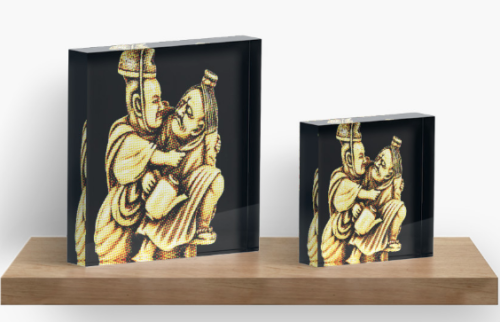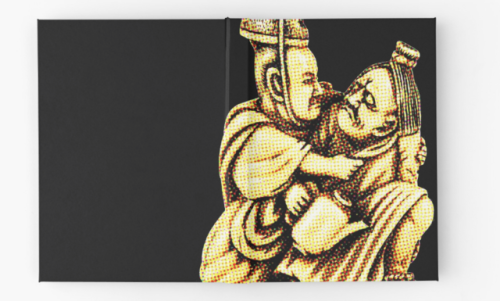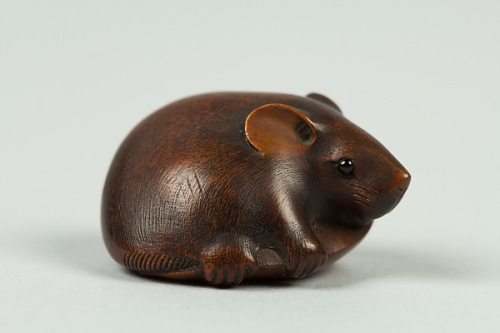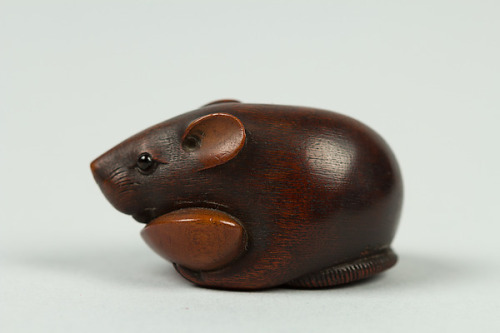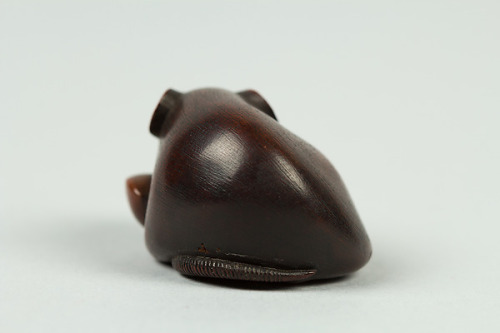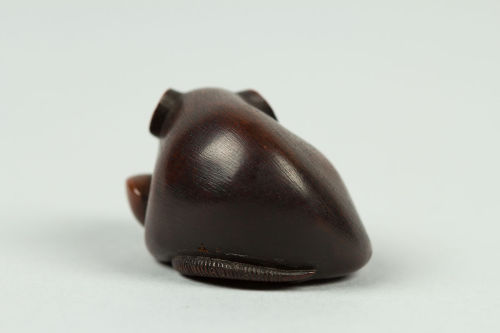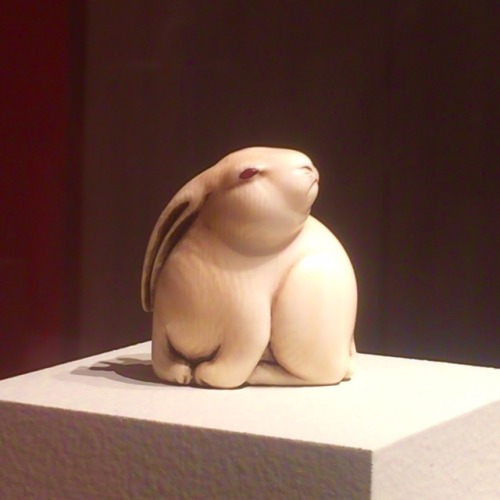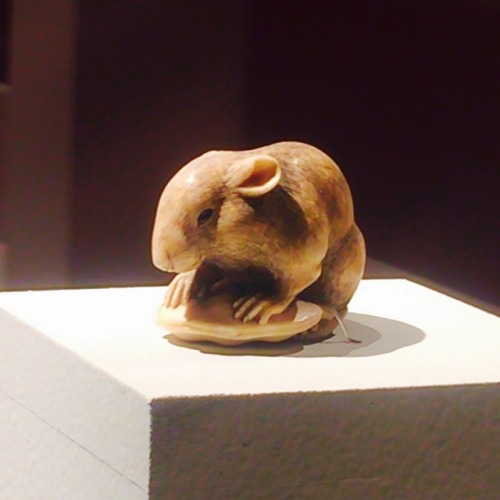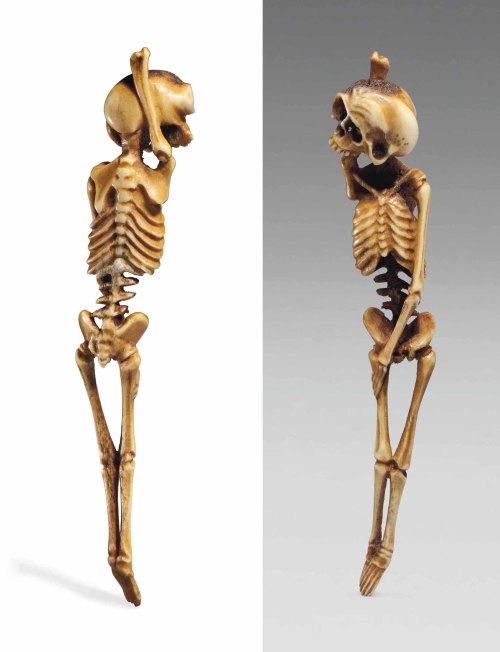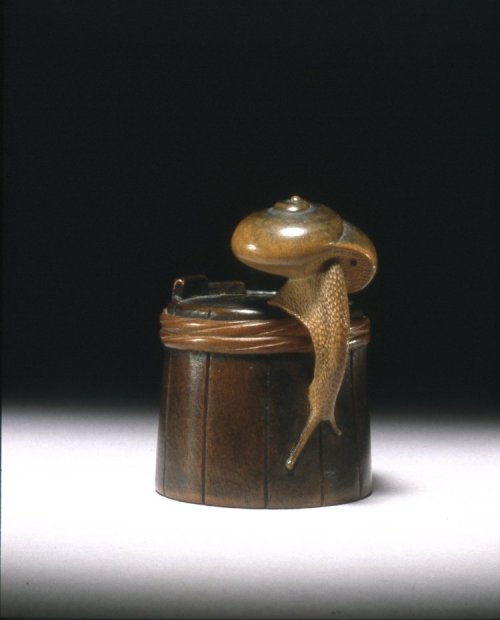#netsuke
Netsuke of Two Male Figures
Date: 19th century, Japan.
Medium: Ivory
And “Pop Netsuke (Anger)” available on Redbubble as shirts, prints, journals, or anything else, if you’d like one of your own or to support Asian History!
The above is a katabori netsuke, or a “sculpture” netsuke. Netsuke are Japanese in origin, and provided people with a unique way to combine function and fashion:
The traditional form of Japanese dress, the kimono, had no pockets. Women would tuck small personal items into their sleeves, but men suspended their tobacco pouches, pipes, purses, writing implements, and other items of daily use on a silk cord passed behind their obi(sash). These hanging objects are called sagemono. The netsuke was attached to the other end of the cord preventing the cord from slipping through the obi. A sliding bead (ojime) was strung on the cord between the netsuke and the sagemono to allow the opening and closing of the sagemono.
The entire ensemble was then worn, at the waist, and functioned as a sort of removable external pocket. All three objects (netsuke,ojime and the different types of sagemono) were often beautifully decorated with elaborate carving, lacquer work, or inlays of rare and exotic materials. Subjects portrayed in netsuke include naturally found objects, plants and animals, legends and legendary heroes, myths and mystical beasts, gods and religious symbols, daily activities, and myriad other themes.
-International Netsuke Society
Post link
Kappa on a clam , Rensai, late 19th century, netsuke.
The Kappa was a Japanese water deity often depicted with a turtle carapace long hair and a depression on the head which was used to hold vital fluids. It dwelled in rivers and was an object of great terror to small children and travellers.
The carved ivory object we see here is a netsuke, which was a toggle used to hold an inro (small box or pouch containing money, medicine and other objects) in place over the sash of a person’s robe.
Post link
Netsuke (Japan, 1701-1900). Hare grinding with a mortar and pestle.
Probably refers to the ‘Hare in the Moon’, a messenger of the moon deity. The hare mixes the elixir of immortality with his mortar and pestle.
Image and text information courtesy Wellcome Collection. Attribution 4.0 International (CC BY 4.0)
Post link
Netsuke of a Rat Grasping a Snowpea (Japan, early 19th century). Wood.
Images and text courtesy The Met.
Post link
A Netsuke Menagerie
Japanese netsuke are small, exquisitely carved sculptural objects that originally served to secure personal items to the kimono sash. Their utilitarian function declined as the kimono fell out of fashion, but their popularity as a collectible and souvenir ensured the continuation of the rich carving tradition. Historically, the sculptures were inspired by nature, myths, masks, and religion. As the name implies, this exhibition features a collection of animal-themed netsuke in all their diminutive, furry, and fierce splendor.
Post link
Kewsion (Kewpie x Anime characters) Netsuke Straps.
1) Kewpie x Tarepanda
2) Kewpie x Parman
3) Kewpie x Sesame Street’s Elmo
4) Kewpie x Cheburashka
5) Kewpie x Touch’s Mimami
6) Kewpie x Betty Boop
7) Kewpie x Princess Knight
8) Kewpie x Golgo 13
9) Kewpie x Cinnamoroll
Post link


